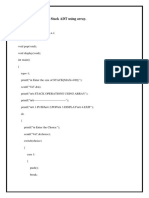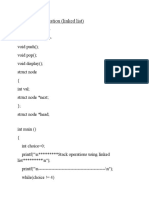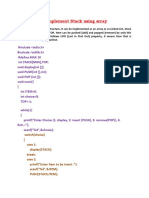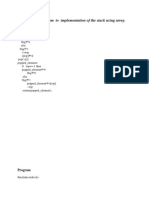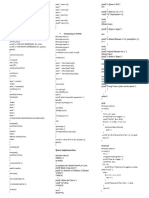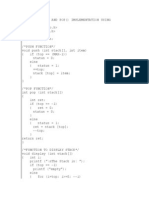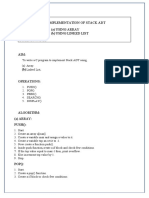Implementing Stack in C
Stacks can be represented using structures, pointers, arrays, or linked lists.
This example implements stacks using arrays in C:
#include <stdio.h>
#include <stdlib.h>
#define SIZE 4
int top = -1, inp_array[SIZE];
void push();
void pop();
void show();
int main()
{
int choice;
while (1)
{
printf("\nPerform operations on the stack:");
printf("\n1.Push the element\n2.Pop the element\n3.Show\
n4.End");
printf("\n\nEnter the choice: ");
scanf("%d", &choice);
switch (choice)
{
case 1:
push();
break;
case 2:
pop();
break;
case 3:
show();
break;
case 4:
exit(0);
default:
printf("\nInvalid choice!!");
}
}
}
void push()
{
int x;
if (top == SIZE - 1)
{
printf("\nOverflow!!");
}
� else
{
printf("\nEnter the element to be added onto the stack: ");
scanf("%d", &x);
top = top + 1;
inp_array[top] = x;
}
}
void pop()
{
if (top == -1)
{
printf("\nUnderflow!!");
}
else
{
printf("\nPopped element: %d", inp_array[top]);
top = top - 1;
}
}
void show()
{
if (top == -1)
{
printf("\nUnderflow!!");
}
else
{
printf("\nElements present in the stack: \n");
for (int i = top; i >= 0; --i)
printf("%d\n", inp_array[i]);
}
}
This program presents the user with four options:
1. Push the element
2. Pop the element
3. Show
4. End
Note:If the user selects 1, the program handles a push(). First, it checks
whether top is equivalent to SIZE - 1. If true, "Overflow!!" is displayed.
Otherwise, the user is asked to provide the new element to add to the stack.















